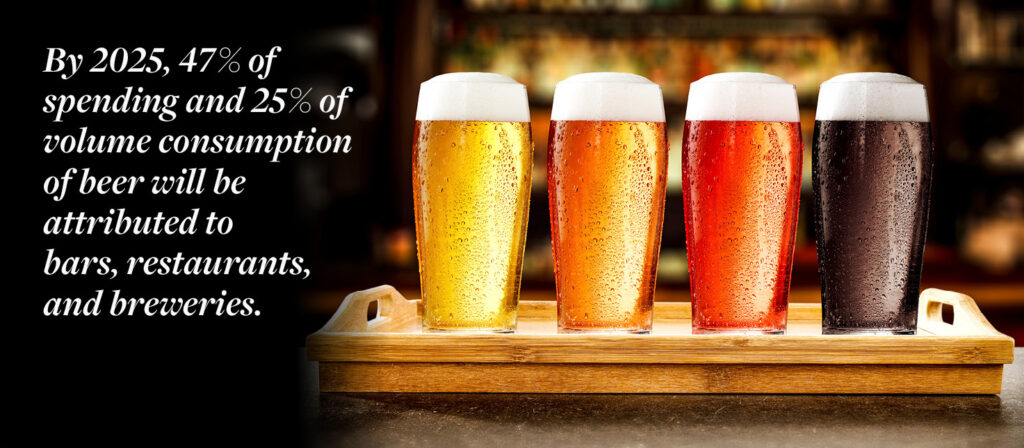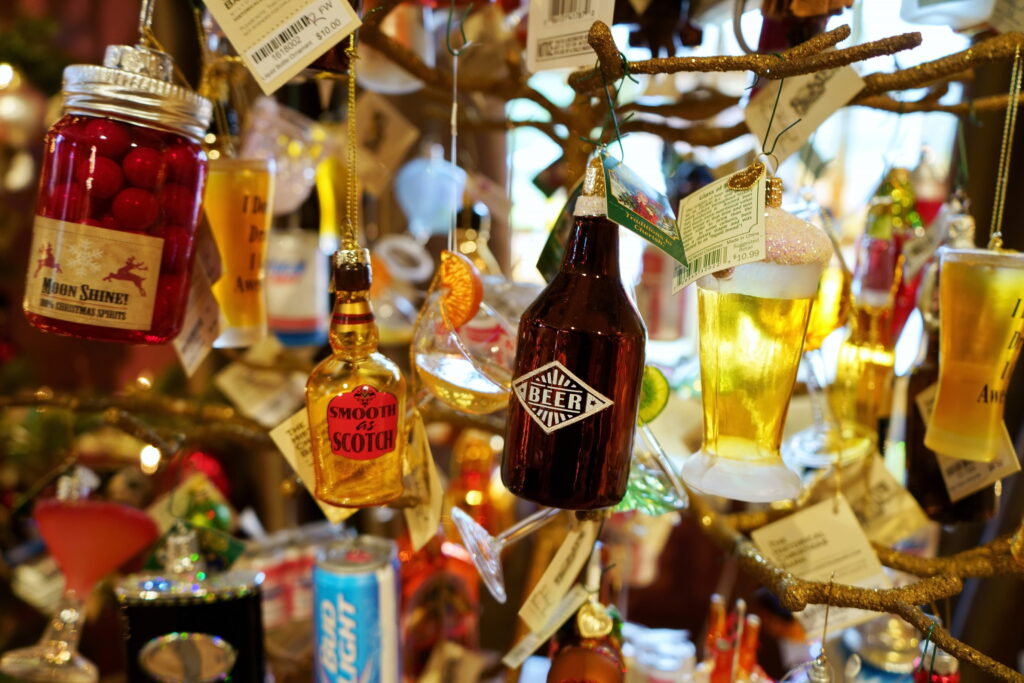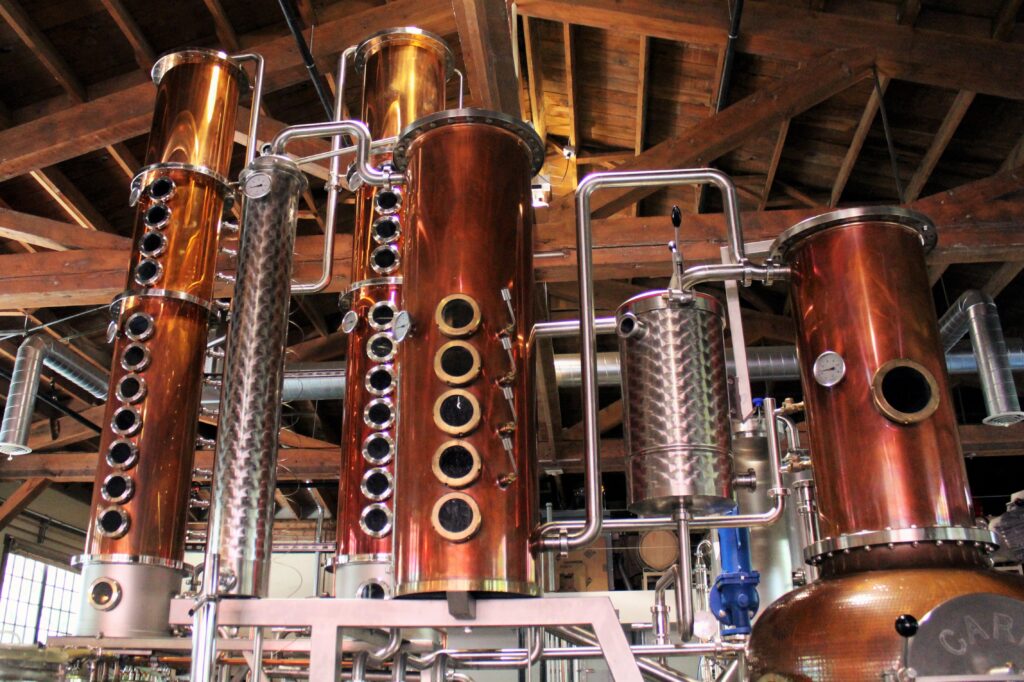
By: Adam Stump – Managing Director at Hilco Valuation Services
Since our previous Craft Brewing article published back in mid 2020, fear of mass closures in the craft brewing industry has subsided, and the industry as a whole seems to have largely recovered.
As of 2023 – Quarter Three, we have seen microbreweries faring somewhat better than brew pubs when comparing openings vs closings. This can be largely attributed to the higher food cost and lower margins associated with the pubs. The labor market, which continues to present challenges across all areas of customer service, also remains an impediment to brew pub operational efficiency and profitability.
Closings of small breweries rose in 2022 as compared with 2021, but were only around 3% of the market, which is relatively low and further signifies that the industry is maturing. Meanwhile, the overall U.S. brewery count increased from 9,384 in 2021 to 9,709 in 2022.
U.S. beer volume was also down just over 3% last year. While craft volume was up slightly, it is worth noting that total Craft volume stood at 21MM BBLs in 2014 and has grown by only 3MM BBLS over nine years to reach a level of 24MM BBLs in 2022, with quite a few ups and downs in between. Many in the industry and across the associated supply chain had hoped and, in some cases, banked on more significant growth.
Year-over-year craft beer production volume was relatively flat in 2022 when compared with the previous year, while draft and distributed sales were down somewhat. We expect that this will require breweries to refocus on stronger brands and geographies while still innovating new products moving ahead.
Craft breweries have continued to diversify their portfolios in an attempt to reach a broader audience via a variety of beverage offerings. These include items such as seltzer, canned cocktails, hard kombucha, and other creative options designed for today’s palate. Most are targeted at those who do not regularly drink beer, producers’ core offering. This year we have also seen greater numbers of operators with excess capacity more proactively seeking out and providing contract brewing services to third parties. While this practice can help generate necessary cash flow in the short term, it can have the unintended consequence of stalling out an operator’s longer-term planned growth strategy. In some cases, both in this and other industries, we have seen this lead to a lack of investor confidence and cascading funding issues.
These factors, combined with the nature of a maturing industry with increased competition, make for an environment conducive to acquisition and consolidation. Accordingly, a number of deals have taken place recently. Already in 2023, Stoup Brewing acquired Optimism Brewing and Lucky Bucket was bought back by its original co-founder, now the owner of Brickway Brewery and Distillery. These transactions follow other notable sales that have taken place over the past couple of years, including the Bell’s Brewery sale to Australia/New Zealand-based Lion, a division of Kirin Brewing Company and Stone Brewing’s sale to Sapporo Breweries.
As always, Industry-backed engagement with state regulators and legislators has been active this year. The emphasis of these efforts now is on further loosening laws such as those for differentiating malt-based and spirit based tax rates, direct-to-consumer shipping and self-distribution, as well as sports and entertainment sponsorships that result in near exclusivity. These are important issues for many operators that stand to directly affect their market share and profitability moving ahead.

While supply chains have continued to ease, enabling faster access to new equipment, the cost of acquiring those new assets has risen notably as a result of inflation, the tight labor market, and higher raw material costs. Additionally, a continued CO2 shortage has impacted the industry. Because brewers use CO2 to purge oxygen levels during certain critical processes and for pressurizing tanks and moving beer through lines, some have taken to recapturing the gas during the fermentation process, for later reuse. The good news is that overall, import shipping and delivery costs have decreased by nearly 50 percent since the peak of the pandemic-driven commercial transportation crisis and fewer manufacturers are reporting cancellations on existing orders.
With government assistance well behind us and capital harder to come by, producers and marketers across the beer market are having to refocus their efforts on their best performing brands. We are seeing this play out in many ways, perhaps most notably with Constellation brands which first signaled its exit from craft beer via the sale of Ballast Point to Kings and Convicts Brewing in 2019 for a fraction of its purchase price, and more recently with the divestiture of both Funky Buddha Brewery and Four Corners Brewing, presumably also at a significant loss.
Lastly, it is important to point out a variety of trends that have been pervasive in the craft beer industry over the past year. Some of the most notable of these are summarized below:
• Sour beers have continued to gain popularity, transitioning from niche to mainstream and driving impressive sales for many of those brewers who have embraced the trend.
• After being largely disregarded on the craft scene, lagers are enjoying a healthy resurgence alongside dominant IPAs.
• The rise of CBD’s popularity has resulted in many craft breweries experimenting with CBD-infused beers targeted at those likely to appreciate their relaxing properties.
• Appealing to those who prefer or frequently drink wine, the wine-like notes of rosé beer are growing in acceptance and popularity.
• Greater access to hops is allowing more breweries to produce fresh hop beers that are generating solid enthusiasm from customers.
• Hazy, fruity beers are continuing to thrive, attracting first-time and experienced beer drinkers to their ranks.
Concluding Thoughts for Lenders with Industry Exposure
Because craft brewers specialize in regional, unique beer styles such as ales, stouts, and wheat beers, these smaller enterprises tend to encounter certain challenges that are unlike those faced by their large scale, mass production brewer counterparts. For example, craft breweries rely heavily on local water quality, which affects the flavor of their beer. The specific mineral content in water is also crucial for certain varieties. Importantly, for every gallon of craft beer produced, up to seven gallons of water may be used. This makes access to pure water sources critical and any disruption to that access potentially catastrophic.
While craft beer aficionados appreciate a variety of flavors, brand loyalty can be fleeting. To remain relevant and successful, craft breweries must constantly be innovating and introducing new offerings. The cost of this type of constant innovation can be significant, particularly when the market does not respond well to one or more of a brewer’s releases. In addition to the industry lobbying efforts referenced earlier in this article, the Brewers Association is actively supporting pending legislation that would allow craft brewers and others to immediately deduct research and experimental (R&E) expenditures in the year these costs are incurred.
Additionally, with thousands of players vying for market share, attracting skilled employees and standing out from the crowd has become difficult, particularly given the shortage of applicants that this and many other industries have been facing since the pandemic.
With these thoughts in mind, we encourage lenders with exposure to the craft beer market to remain in close contact with, and provide guidance to borrowers. From margin pressure to inventory aging, it is important, as always, to understand the many distinct challenges that those borrowers now face– only some of which have been outlined here. Doing so can help build a strong, mutually beneficial relationship while serving to help limit downside risk.
Hilco has engaged with multiple craft brewers and suppliers over the past year and we welcome the opportunity to share the many insights we have gained through those efforts. Accordingly, we encourage you to reach out to our team to discuss any current or imminent needs you may have. We are here to help.
Hilco Valuation Services is the world’s leading provider of asset appraisals with a proven, decades-long track record of providing the most accurate appraisals across all asset categories. The scope of the valuations we deliver ranges from a single asset in one domestic location to millions of assets located around the world. We are able to affirm current asset value through proprietary market data sourced from the collective worldwide asset disposition and acquisition experiences of Hilco Global over time. In contrast to the aged data relied upon by others in the industry, access to this cumulative, real-time information ensures delivery of the most reliable valuations for our clients. From brewing, distilling and chemical processing, to aerospace, financial services, retail, energy, healthcare and technology, we have delivered valuations for all industries. Additionally, the breadth and depth of our team’s expertise enables us to provide services ranging from Lending and Financial Reporting to Enterprise Planning and Litigation Support.
Adam Stump is a managing director at Hilco Valuation Services and has been active in the auction, liquidation and appraisal industries since 1998. He frequently consults with financial institutions on asset-based loans and recovery, and over the past 12 months has been instrumental in delivering appraisal and advisory pertaining to dozens of craft brewers. During the course of his career, Adam has conducted or managed thousands of valuations across a wide spectrum of M&E categories including Metalworking, Fabricating, Plastics Manufacturing, Production & Assembly, Packaging, Distribution, Fulfillment, Food and Beverage, Chemical Processing, among others. He also has testified as an expert witness in numerous litigation cases. He is an avid home brewer as well. Adam earned his Bachelor of Science Degree in Computer Sciences from Bowling Green State University and his Associate of Arts Degree from Colorado Mountain College. Contact Adam at 847.849.2953 or astump@hilcoglobal.com.









